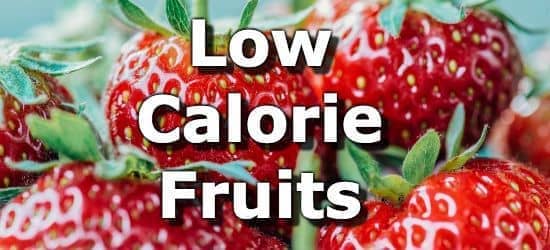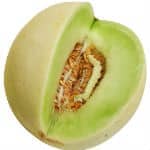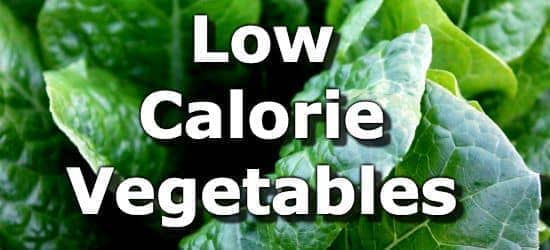15 Fruits Lowest in Calories

Fruits are one of the healthiest and most nutrient dense food groups: they are a great source of fiber, vitamins, antioxidants and water. They are also one of the lowest calorie foods and are therefore great for anyone trying to lose weight.
Not all fruits are created equal, however. Some are higher in natural sugars, and calories than others.
The list below is designed to provide you with the lowest-calorie fruits. These include strawberries, peaches, cantaloupe, honeydew melon, grapes, blackberries, and papaya. For more, see the complete nutrient ranking of fruits low in calories.
-
1. Strawberries
Calories per Cup Calories per 100g 53 calories 32 calories -
 2. Peaches
2. Peaches
Calories per Cup Calories per 100g 60 calories 39 calories -
3. Cantaloupe
Calories per Cup Calories per 100g 60 calories 34 calories -
 4. Honeydew Melon
4. Honeydew Melon
Calories per Cup Calories per 100g 61 calories 36 calories -
 5. Grapes
5. Grapes
Calories per Cup Calories per 100g 62 calories 67 calories -
 6. Blackberries
6. Blackberries
Calories per Cup Calories per 100g 62 calories 43 calories -
7. Papaya
Calories per Cup Calories per 100g 62 calories 43 calories -
 8. Raspberries
8. Raspberries
Calories per Cup Calories per 100g 64 calories 52 calories -
9. Apples
Calories per Cup Calories per 100g 65 calories 52 calories -
 10. Grapefruit
10. Grapefruit
Calories per Cup Calories per 100g 74 calories 32 calories -
 11. Apricots
11. Apricots
Calories per Cup Calories per 100g 74 calories 48 calories -
12. Plums
Calories per Cup Calories per 100g 76 calories 46 calories -
13. Pineapple
Calories per Cup Calories per 100g 83 calories 50 calories -
14. Blueberries
Calories per Cup Calories per 100g 84 calories 57 calories -
 15. Oranges
15. Oranges
Calories per Cup Calories per 100g 85 calories 47 calories
About the Data
Data for the curated food lists comes from the USDA Food Data Central Repository.
You can check our data against the USDA by clicking the (Source) link at the bottom of each food listing.
Note: When checking data please be sure the serving sizes are the same. In the rare case you find any difference, please contact us and we will fix it right away.
About Nutrient Targets
Setting targets can provide a guide to healthy eating.
Some of the most popular targets include:- Daily Value (%DV) - The daily value (%DV) is a general guideline for consumption that will prevent deficiency of a particular nutrient in most people. The %DV refers to the percentage of an amount that\'s found in a single serving of a food. It also accounts for absorption factors. It is set by the U.S. FDA.
- Recommended Dietary Allowance (%RDA) - The RDA sets an average daily dietary intake level that is sufficient to meet the nutrient requirements of nearly all (97.5%) healthy individuals. It\'s more specific than the daily value, and varies by age and gender. The RDA is set by the US National Institutes of Health.
- Reference Dietary Intake (%RDI) -The reference dietary intake is similar to the recommended daily allowance, but is specific to age and gender. The RDI for amino acids is set by the U.N. World Health Organization.
- Adequate Intake (%AI) - This value is primarily used in reference to omega-3 and omega-6 fats. The Adequate Intake is set by the U.S. Institute of Medicine. Because there is less evidence to determine the ideal targets for consumption of these nutrients, the specific amount is considered to be less reliable. Using the term Adequate Intake, rather than one of the other terms, helps to emphasize that the ideal intake of that particular nutrient has not yet been scientifically determined.
See the Guide to Recommended Daily Intakes for more information.
Want to set your own targets? Sign up for an account and set custom targets in the daily food log.From the Nutrient Ranking Tool
Use the ranking tool links below to select foods and create your own food list to share or print.
- Foods High in Calories
- Foods Low in Calories
- Vegetables High in Calories
- Fruits High in Calories
- Vegetarian Foods High in Calories
- Nuts High in Calories
- Grains High in Calories
- Beans High in Calories
- Dairy High in Calories
- Breakfast Cereals High in Calories
- Fast Foods High in Calories
View more nutrients with the nutrient ranking tool, or see ratios with the nutrient ratio tool.
Related
Data Sources and References
Try the recipe nutrition calculator, or daily meal planner.
Create a free account to log and track foods.

 Next ➞
Next ➞